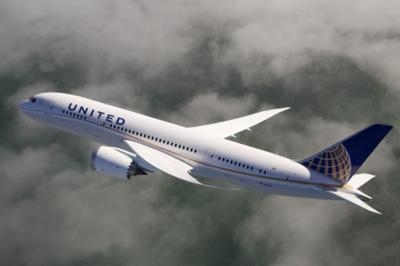Analyst Brian Foley Parses The Effect Of Cheap Oil On All Segments Of The Industry
Oil prices have now fallen some fifty percent of late, and if sustained it’s bound to have some implications for an industry that relies on it, a lot of it, for propulsion. “One might initially think that a drop in oil prices would benefit the entire civil aviation industry as a whole, but as one digs a little deeper there are actually two aspects to it,” notes analyst Brian Foley of BRiFO, a Sparta, NJ-based aviation consultancy.

The obvious benefactors of this windfall are the airlines who only recently had fuel bills that accounted for close to a third of their total operating costs. While the initial benefit of lower jet fuel may be diminished or postponed while unwinding from fuel hedging commitments, this will eventually have a huge overall impact on the industry’s profitability.
Despite lower fuel costs, ticket prices so far have remained relatively unchanged. While this provides some short-term financial gain to airlines it also paves the way for new entrants. While it would take some time to develop, the door is open for a new breed of startup to emerge that uses cast-off, practically new aircraft the majors are ditching in favor of new, fuel-efficient models. Although the older aircraft would burn more fuel and need more maintenance, it would be offset by substantially lower acquisition costs and cheap fuel.
Cargo and package carriers like UPS and FedEx are in a position to reap the benefits of lower fuel prices. “It will be interesting to see how much longer they can justify the add-on fuel surcharges before customers catch on and challenge them.”
The beleaguered low-end of general aviation aircraft market would also benefit. This includes small piston aircraft such as Cirrus, Piper and Robinson Helicopter up through small-and medium-sized private jets like Cessna Citations and Bombardier Learjets. This segment has been traditionally driven by the North American market (read US) which is now the best performing large economy in the world. Lower fuel prices will further act as a sales catalyst since the smaller segment is very price elastic, meaning people are more inclined to fly and buy when fuel is more affordable.
Lastly, aircraft maintenance (MRO) and parts providers would see an increase in activity if airlines keep current aircraft longer rather than taking new ones. And Fixed Base Operators (FBOs), charter and fractional providers could get a boost from increased flying activity due to lower fuel operating costs and an improving economy.

There’s a flip-side to lower oil prices that negatively affects a much larger swath of the industry’s overall delivery value. Airliner manufacturers and suppliers face the risk of the business case weakening for their new, premium-priced, fuel efficient jets for which there are thousands of orders pending. With cheaper fuel making for a smaller component of operating budgets, airlines may re-evaluate their new jet orders - checking the financial viability of taking on higher capital costs and/or lease payments for fuel efficiency’s sake. In some cases the scale will tip in favor of keeping the relatively young fleets they’re already operating even if they’re burning more low-priced kerosene. Boeing’s CEO stated that oil must remain below $70 per barrel for a sustained period to threaten the order book. Oil plunged below that point late last year and is now trending well below it.
Deflating airline order books wouldn’t happen catastrophically, but rather insidiously as progress payments become due from buyers over the next several years. Until then buyers will be inclined to keep their orders as long as they can in case oil prices slingshot back up. In famous airline/lessor tradition many orders will be indefinitely deferred rather than cancelled just to keep a place in line in the event the fuel price pendulum swings the other way. An increase in today’s historically low borrowing rates and/or a further strengthening of the US Dollar would further compound shrinking order books.
Another sector that would feel the heat is offshore oil and gas where the cost to extract energy is typically higher than on land. Oil crews are flown to rigs using large, expensive helicopters which represent a big percentage of the civil rotorcraft industry’s yearly delivery value. The demand for this type of equipment will languish as new drilling is put on hold and rigs not breaking even are idled. A slowdown in this sector would also impact the service providers such as helicopter operators, fuel and maintenance providers and lessors. In an unfortunate timing of events, a number of new helicopter models have just undergone costly development by the major manufacturers to serve this market.

A final change will be seen in the sales distribution of business jets. Ever since the recession the only signs of strength were, surprisingly, from the biggest, most expensive models the manufacturers had to offer. A lot of this sales activity was generated by the once hot markets abroad including China and other emerging markets. Now with lower oil and commodity prices coupled with weaker economies, these markets have been greatly compromised. In place of big cabin private jets, the decimated small- and medium-sized jets will rise to the occasion since this segment’s sales center of gravity aligned not with commodities, but with the fortunes of the US economy - which is now on a tear.
In all, a sustained drop in oil prices will help some segments of the civil aviation industry while others, representing a much larger economic value, potentially have the most to lose. “Major structural changes are already quietly afoot, and the effects will be profound.”
(Images from file)
 ANN's Daily Aero-Term (04.24.24): Runway Lead-in Light System
ANN's Daily Aero-Term (04.24.24): Runway Lead-in Light System ANN's Daily Aero-Linx (04.24.24)
ANN's Daily Aero-Linx (04.24.24) Aero-FAQ: Dave Juwel's Aviation Marketing Stories -- ITBOA BNITBOB
Aero-FAQ: Dave Juwel's Aviation Marketing Stories -- ITBOA BNITBOB Classic Aero-TV: Best Seat in The House -- 'Inside' The AeroShell Aerobatic Team
Classic Aero-TV: Best Seat in The House -- 'Inside' The AeroShell Aerobatic Team Airborne Affordable Flyers 04.18.24: CarbonCub UL, Fisher, Affordable Flyer Expo
Airborne Affordable Flyers 04.18.24: CarbonCub UL, Fisher, Affordable Flyer Expo





